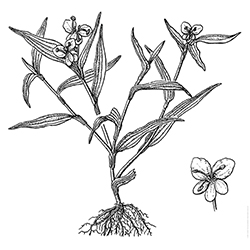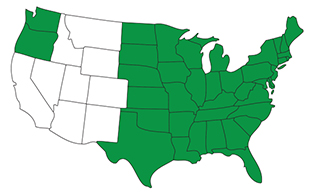

Dayflower
Commelina communis
Dayflower is an annual monocot broadleaf weed that resembles a dicot broadleaf weed. It is commonly known as Asiatic Dayflower and Common Dayflower but is also referred to by its scientific name, Commelina communis.
Identify

Entire

Lanceolate
Dayflower initially grows erect but eventually takes on a creeping or somewhat ascending growth habit that makes it easy to identify. Its stems and leaves are thick and fleshy, with the leaves lacking petioles and featuring hairs on the upper and lower surfaces. The leaves also feature parallel running veins often found in monocots. This broadleaf weed also has sheaths at the base of the blade, clasping the stem and hairs at the base of the blade where the sheath opens. Blooming from mid-summer to early fall, Dayflower features small blue flowers with three petals. The flowers last for only one day, hence the name Dayflower.
Life Cycle
This broadleaf weed prefers rich, moist soils and commonly occurs along the edges of lawns, gardens, fence rows, buildings and waste areas. Dayflower thrives in most of the southern, eastern and midwestern parts of the United States and can also be found in Washington and Oregon.

Control
In order to be effective, hand-pulling of this broadleaf weed must occur when the weed is small, and considerable care must be taken to ensure that all the stem fragments have been removed. Relying solely on cultural weed control methods—such as hand-pulling or proper mowing and watering routines—for removing Commelina communis typically results in reestablishment of the weed in your lawn.







